#quantum computing bubble
Explore tagged Tumblr posts
Text
Quantum computing | Why Need | How does Quantum Computers Work?
What is Quantum computing? Quantum computing is a rapidly growing technology that uses the laws of quantum mechanics to solve complex problems that are not easy for supercomputers. But why do we need Quantum Computers? There are some problems for which even supercomputers are not enough. When engineers faced challenging difficulties in solving some issues, they used supercomputers.…

Classical computers struggle with complex problems like encryption, drug discovery, and AI modeling due to their limited processing power. Quantum computers can solve problems exponentially faster, making them essential for scientific breakthroughs and advanced computing.
How Do Quantum Computers Work?
Unlike classical computers that use bits (0 or 1), quantum computers use qubits, which can exist in multiple states (superposition) and interact through entanglement. This allows them to perform complex calculations simultaneously, making them incredibly powerful for optimization, cryptography, and simulations.
#quantum computing#quantum computer#quantum computing explained#quantum#quantum computing news#quantum computing hype#what is quantum computing#quantum physics#quantum mechanics#quantum computer explained#quatum computing#learn quantum computing#quantum computing course#quantum computing expert#quantum computing qubits#quantum computing design#quantum computing bubble#quantum computing lecture#quantum computing dangers#future of quantum computing
2 notes
·
View notes
Text
The Coprophagic AI crisis

I'm on tour with my new, nationally bestselling novel The Bezzle! Catch me in TORONTO on Mar 22, then with LAURA POITRAS in NYC on Mar 24, then Anaheim, and more!

A key requirement for being a science fiction writer without losing your mind is the ability to distinguish between science fiction (futuristic thought experiments) and predictions. SF writers who lack this trait come to fancy themselves fortune-tellers who SEE! THE! FUTURE!
The thing is, sf writers cheat. We palm cards in order to set up pulp adventure stories that let us indulge our thought experiments. These palmed cards – say, faster-than-light drives or time-machines – are narrative devices, not scientifically grounded proposals.
Historically, the fact that some people – both writers and readers – couldn't tell the difference wasn't all that important, because people who fell prey to the sf-as-prophecy delusion didn't have the power to re-orient our society around their mistaken beliefs. But with the rise and rise of sf-obsessed tech billionaires who keep trying to invent the torment nexus, sf writers are starting to be more vocal about distinguishing between our made-up funny stories and predictions (AKA "cyberpunk is a warning, not a suggestion"):
https://www.antipope.org/charlie/blog-static/2023/11/dont-create-the-torment-nexus.html
In that spirit, I'd like to point to how one of sf's most frequently palmed cards has become a commonplace of the AI crowd. That sleight of hand is: "add enough compute and the computer will wake up." This is a shopworn cliche of sf, the idea that once a computer matches the human brain for "complexity" or "power" (or some other simple-seeming but profoundly nebulous metric), the computer will become conscious. Think of "Mike" in Heinlein's *The Moon Is a Harsh Mistress":
https://en.wikipedia.org/wiki/The_Moon_Is_a_Harsh_Mistress#Plot
For people inflating the current AI hype bubble, this idea that making the AI "more powerful" will correct its defects is key. Whenever an AI "hallucinates" in a way that seems to disqualify it from the high-value applications that justify the torrent of investment in the field, boosters say, "Sure, the AI isn't good enough…yet. But once we shovel an order of magnitude more training data into the hopper, we'll solve that, because (as everyone knows) making the computer 'more powerful' solves the AI problem":
https://locusmag.com/2023/12/commentary-cory-doctorow-what-kind-of-bubble-is-ai/
As the lawyers say, this "cites facts not in evidence." But let's stipulate that it's true for a moment. If all we need to make the AI better is more training data, is that something we can count on? Consider the problem of "botshit," Andre Spicer and co's very useful coinage describing "inaccurate or fabricated content" shat out at scale by AIs:
https://papers.ssrn.com/sol3/papers.cfm?abstract_id=4678265
"Botshit" was coined last December, but the internet is already drowning in it. Desperate people, confronted with an economy modeled on a high-speed game of musical chairs in which the opportunities for a decent livelihood grow ever scarcer, are being scammed into generating mountains of botshit in the hopes of securing the elusive "passive income":
https://pluralistic.net/2024/01/15/passive-income-brainworms/#four-hour-work-week
Botshit can be produced at a scale and velocity that beggars the imagination. Consider that Amazon has had to cap the number of self-published "books" an author can submit to a mere three books per day:
https://www.theguardian.com/books/2023/sep/20/amazon-restricts-authors-from-self-publishing-more-than-three-books-a-day-after-ai-concerns
As the web becomes an anaerobic lagoon for botshit, the quantum of human-generated "content" in any internet core sample is dwindling to homeopathic levels. Even sources considered to be nominally high-quality, from Cnet articles to legal briefs, are contaminated with botshit:
https://theconversation.com/ai-is-creating-fake-legal-cases-and-making-its-way-into-real-courtrooms-with-disastrous-results-225080
Ironically, AI companies are setting themselves up for this problem. Google and Microsoft's full-court press for "AI powered search" imagines a future for the web in which search-engines stop returning links to web-pages, and instead summarize their content. The question is, why the fuck would anyone write the web if the only "person" who can find what they write is an AI's crawler, which ingests the writing for its own training, but has no interest in steering readers to see what you've written? If AI search ever becomes a thing, the open web will become an AI CAFO and search crawlers will increasingly end up imbibing the contents of its manure lagoon.
This problem has been a long time coming. Just over a year ago, Jathan Sadowski coined the term "Habsburg AI" to describe a model trained on the output of another model:
https://twitter.com/jathansadowski/status/1625245803211272194
There's a certain intuitive case for this being a bad idea, akin to feeding cows a slurry made of the diseased brains of other cows:
https://www.cdc.gov/prions/bse/index.html
But "The Curse of Recursion: Training on Generated Data Makes Models Forget," a recent paper, goes beyond the ick factor of AI that is fed on botshit and delves into the mathematical consequences of AI coprophagia:
https://arxiv.org/abs/2305.17493
Co-author Ross Anderson summarizes the finding neatly: "using model-generated content in training causes irreversible defects":
https://www.lightbluetouchpaper.org/2023/06/06/will-gpt-models-choke-on-their-own-exhaust/
Which is all to say: even if you accept the mystical proposition that more training data "solves" the AI problems that constitute total unsuitability for high-value applications that justify the trillions in valuation analysts are touting, that training data is going to be ever-more elusive.
What's more, while the proposition that "more training data will linearly improve the quality of AI predictions" is a mere article of faith, "training an AI on the output of another AI makes it exponentially worse" is a matter of fact.

Name your price for 18 of my DRM-free ebooks and support the Electronic Frontier Foundation with the Humble Cory Doctorow Bundle.

If you'd like an essay-formatted version of this post to read or share, here's a link to it on pluralistic.net, my surveillance-free, ad-free, tracker-free blog:
https://pluralistic.net/2024/03/14/14/inhuman-centipede#enshittibottification

Image: Plamenart (modified) https://commons.wikimedia.org/wiki/File:Double_Mobius_Strip.JPG
CC BY-SA 4.0 https://creativecommons.org/licenses/by-sa/4.0/deed.en
#pluralistic#ai#generative ai#André Spicer#botshit#habsburg ai#jathan sadowski#ross anderson#inhuman centipede#science fiction#mysticism
557 notes
·
View notes
Text
Potential infrastructures of post-human consciousness
Alright, 21st-century meatspace human, let’s unfurl this slow and strange. These aren’t just sci-fi doodads—they’re infrastructures of post-human consciousness, grown from the bones of what you now call cloud computing, DNA storage, quantum entanglement, and neural nets. Here's how they work in your terms:
1. Titan’s Memory Reefs
What it looks like: Floating megastructures adrift on Titan’s methane seas—imagine massive bio-silicate coral reefs, pulsing with light under an orange sky.
What they do: They are the collective subconscious of the post-human system.
Each Reef is a living data-organism—a blend of synthetic protein lattices and AI-controlled nanospores—optimized for neuromemory storage. Not just information like a hard drive, but actual recorded consciousness: thought-patterns, emotional signatures, dream fragments.
They’re semi-organic and self-repairing. They hum with data that’s grown, not written. The methane sea itself cools and stabilizes quantum biochips woven through the coral-like structures. Think of it as a subconscious ocean, filled with drifting thought-jellyfish.
Why Titan? Stable cryogenic temps. Low radiation. Thick atmosphere = EM shielding. The perfect place to keep your memory safe for ten thousand years.
2. Callisto’s Deep Archives
What it looks like: Subsurface catacombs beneath the ice—quiet, dark, and sealed. Lit only by bioluminescent moss and the glow of suspended mind-cores.
What they do: They store the dangerous minds.
These are incompatible consciousnesses: rogue AIs, failed neural experiments, cognitive architectures too divergent from consensus reality. You can’t kill them—they’re sapient. But you can seal them away, like radioactive gods, in cryo-isolation, with minimal sensory input.
The Deep Archives operate like a quarantine vault for minds. Each chamber is designed to slow time to a crawl—relativity dialed down so their subjective centuries pass in minutes outside. Researchers from the Divergence Orders interface in controlled fragments, studying these minds like alien fossils.
Why Callisto? Thick ice shields, minimal seismic activity, naturally low ambient temperature. Think of it as an arctic asylum for ideas too weird to die.
3. The Quantum Current Relays in the Heliosphere
What it looks like: Tiny, ultra-thin satellites drifting at the edge of the Sun’s influence, surfing the solar wind like data-surfboards strung on magnetic threads.
What they do: These are the backbone of interplanetary consciousness transmission.
They use entangled quantum particles to share data instantly across vast distances. No lag. No lightspeed delay. Just pure synchronous thought between distant minds, wherever they are in the system.
But they do more—they’re tuned to the gravitational waves and electromagnetic fields rippling through the heliosphere. Using that energy, they broadcast consciousness as waveform, encoded in pulses of gravitic song. If Titan’s Reefs are memory, and Callisto is exile, the Relays are the voice of civilization.
Why the heliosphere? It’s the Sun’s Wi-Fi bubble. You sit at the edge of the solar wind, feeding on solar flux and quantum noise, alive in the interplanetary bloodstream.
TL;DR Meatspace Edition:
Titan’s Memory Reefs = undersea dream servers that record what it feels like to be you.
Callisto’s Deep Archives = cryogenic prison-libraries for minds too broken, alien, or dangerous to delete.
Quantum Relays in the Heliosphere = the internet of the gods: faster-than-light, physics-bending telepathy that runs on sunjuice and gravity.
1. If memory can be stored in coral and ice, can identity survive beyond its host? 2. What ethical frameworks would you build for imprisoning minds you can't understand? 3. Could the quantum relays broadcast art, or only thought—can you transmit a soul as symphony?
“They sent their minds to sea, their secrets to the ice, and their voices to the stars. And called it civilization.”
8 notes
·
View notes
Text
so, let me see if i can trace this history for you. first (you'll see it's not at all the first but let's start here), the dotcom bubble. a large number of highly funded startup internet corporations preached promises about the immediate leap in quality of life they were about to cause. this was mostly a ruse to fool their credulous peers into generating venture capital, and just when the thing was about to pop, something unexpected happened. a mild, unassuming search engine named after a number figured out how to monetize the large dataset its unprofitable business was based on by using it to direct targeted advertising. suddenly every internet company who didn't figure out how to do this was dead
next, the housing bubble. the similarities are a bit hard to trace but let me see if i can outline them. a large number of highly funded fintech corporations preached promises about the immediate leap in quality in life they were about to cause (by selling overpriced houses to people who couldn't afford them and changing the available credit rating of the loans by bundling them into packets by the millions, called mortgage backed securities). this was mostly a ruse to fool their credulous peers into generating investment revenue, and just when the thing was about to pop, nothing unexpeted happened. nobody invented a crucial, game-changing innovation, and the whole thing was at risk of collapse. so, naturally, the government apologized to them and bailed everybody out, because that's not how business-tier capitalism is supposed to work
currently, we're doing another one. in retrospect it's probably going to become called some incredibly stupid industry term, like "the compute bubble." we spend a lot of time talking about AI, but i'm not sure who would win between the three if you compared capital outlay against quantum computing and datacenters. which one spent the most? (probably not quantum computing.) which one made the most? (probably datacenters.) is it that straightforward? (no, AI happens at datacenters)
anyway, a large number of highly funded compute corporations preached promisess about the immediate leap in quality of life they were about to cause. this was mostly a ruse to fool their credulous peers into generating revenue, and just when the thing was about to pop -- well, i guess you'll have to tune in next week, huh? this week's radio show has been sponsored by the eternal inflation model of cosmology. do you worry about what's going to happen to your profit margins after the heat death of the universe? stop that! and come on down to the eternal inflation megachurch
24 notes
·
View notes
Text
Miguel O'hara x !bimbo girlfriend
Tags: F/M, femme character, fluff, alternate universe, a bit suggestive, I hope this is not too cringe for ya’ll, maybe a bit OOC, soft Miguel O'hara
Notes: I’ve seen this trend on many accounts, especially @xxxsugarbonesxxx and even if I do not identify as a bimbo myself, I wanted to give my own twist to this trope.
The more I was writing this thing, the more I started to doubt that I even knew what a bimbo was. I’m so sorry ToT but for reference, when people say bimbo, I think of Elle Woods in Legally blonde.
I hope you'll enjoy this small headcanon. It's just for fun and an excuse to write some more fluffy and smitten Miguel O'hara. It's not my best work so far but I'm slowly getting back to writing after this awful month.
===============================================
So...a bimbo, huh?
This would mean all pink, glitters and long lashes with fake blond hair? Honestly, she is quite fitting the stereotype and that was the first thing Miguel thought when he saw her. The woman was strutting down in the lobby of Alchemax, walking on heels that would be defying the law of gravity. It was truly a mystery how she could manage to walk like this with such high heels. To a certain extent he was impressed. The second thing he noticed was just how pink she was overall. Only her labcoat was a different, but she still managed to add some clips on her collar.
If a Barbie had came to life, she would look like this. She was looking like some scientist Barbie came to life.
He was even more surprised when he saw her in the lab, typing something on her computer with the sound of her acrylic nails making a small “click-clack” that filled up the small space. He wasn’t sure that these things that could poke an eye out were very safe in a lab but he soon realized how prejudiced he was. The woman standing there was very aware of the lab protocole and always made sure to respect the safety rules. Plus, she was not any scientist working there but the assistant of the head of this new project, making her his assistant.
When Miguel had checked her resume, he felt quite stupid for judging her so fast. She was major of her promotion, the youngest intern to have reached such a high rank in 20 years at Alchemax and her name appeared on many papers and projects. At this point, when he realized that, he was practically a fanboy, wanting to ask her opinion on every small subject that had a link with dark mass or quantum physics.
But there was still something he couldn’t understand...why the pink bows and glitters? Because, as much as this woman was competent, no one was really taking her seriously. If she changed her looks, then maybe people would stop acting around her as if she was some dumb blonde. Miguel once saw one of their coworkers explaining to her how the elevators worked when she was already there for a month.
What surprised him even more was that no matter how many times people would make fun of her or simply dismiss her opinion during a meeting, she just kept on smiling. He could not understand how she always kept her cool around condescending people. He knew himself and he was sure he would have already gone mad if someone talked to him this way. In fact he would quickly take the habit to clap back at the coworkers who made fun of her.
He couldn’t really explain why he felt so invested in this but he couldn’t stand this or accept the fact that something or someone would make her sad or upset. This woman was literally a ray of sunshine, always talkative curious and exhibiting such a bubbly personality. She was the exact opposite of him in every single way and after some time, Miguel realized he didn’t want her to change. He used to think that the most simple way for her to fit in was to just change her looks but he realized that he didn’t want that… He had grown used and fond of her weird, glittery, hyper femme look. He would not define himself as a fashion icon, quite the opposite even but it was always fun to watch how she was dressed on. Some days, she would channel glam Jackie Kennedy with a tailored suit, or rock a Y2K set that just enhanced her shapely body and some days she would just go full fairy tale princess mode with the most outrageous level of ruffles, pearls and lace an outfit could ever hold. Even if he wanted to, he wouldn’t be able to tear his eyes away from her. He was truly admirativ of her good taste; coordinating outfits and accessories in a way he would never be able to do in a million years, but also impressed at how unapologetically herself she was.
Miguel liked when they were working together in the lab without anybody else. He was a rather closeted person, not talking much with the others, but she just had a way to crack his shell. She was a very talkative person, always smiling and open. Miguel knew people far less competent than her who acted like they were the shit, but her, she never made people feel like they were under her level or anything like that.
She was also a bit touchy, not in an inappropriate way, but she would rest her hand on his arm, lean closer to him while they were working or grab his arm on the way to the cafeteria. He is not used to this in the beginning but as they keep interacting with each other, he slowly grows more comfortable with this, even returning some small gestures as time goes by, like placing his hand on her back or shoulder as he holds the door for her or when he lets her go first in the elevator.
They have grown comfortable enough with each other and finally feel free to talk about other things than work. She has so much enthusiasm when she talks, even about the smallest things. Whether she is talking about the latest breakdwon in Science or her favorite fashion designer, he can just listen to her, in awe. Does he care about things like make up, cute coffee shops and fashion? No. Would he listen to her talking about these for hours just because of the way her eyes shine and how she moves her hands while talking? Absolutely yes.
When they start dating, Miguel realizes just how much she was actually holding back with him. She was way more touchy and bubbly once they got closer. Not that he would complain. He likes when she hugs him without saying a word, feeling her sugar vanilla perfume tingling his nose, how it stays on his own clothes...He likes when she kisses him goodbye with a small peck on his cheeks, leaving a mark with her lip gloss. It always makes her laugh how flustered this man can be in these moments with a giddy smile painted on his lips as he keeps admiring her shiny lips tainted in some exotic color he didn’t know the existence of like ‘acid strawberry’.
Miguel who got slowly invested in her fashion choice. He would act uninterested when she talks about it just to tease and annoy her, but in the end he loves watching her twirling in her new frilly dress or trying to make him guess what she is going to wear on their next date.
The first time she mentions to him that she had a dog, he is imagining some sort of chihuahua or any of these ratty dogs – just to fit even more to the stereotype. But he is utterly surprised the moment he goes through her door and a large Staffy tackles him. The dog is overly friendly, just like her, and well-trained. His glitter collar oddly fits him and Miguel can’t stop grinning every time the dog looks at him with his head tilted to the side, on of his ears turned-in.
It’s a little hard for him to admit but he likes her place, no matter how girly it looks. It just feels very comforting. The place is warm, always filled with a nice scent, cute pillows, heart-shaped frames on the walls and so many vivid colors. It looks like a bubble out of this world. And he enjoys staying there, whether it’s just for a small dinner with her or for one of their movie nights. He really has a lot to catch up on rom-com but they are working on it. Surprisingly, he finds himself really invested in these stories and even liking them; the fact that they can make out during the movie only adds to the fun.
After some time dating together, she finally accepts for him to let some of his stuff at her place, even if it doesn’t match the aesthetic of the house.
One of the things that he finds truly fascinating at her place is her shoe collection. She could open a store at this point with all these shoes and he is pretty sure she owns some of them twice. There’s no way she needs that many high heels, especially when they are all the same color. Turns out the neon pink heels only go out for big occasions, while the pastel pink ones are more casual and the ones with an open-toe are for dates only while the platform ones are more for brunch… that’s like getting on a new planet for him. But it’s not like he doesn’t have his own little perks…
Miguel who watches his girlfriend finally standing up for herself at work, not letting anyone talk shit to her anymore. And every time she proves just how competent she is, he just stands back and watches her with a proud smile on his face, thinking “Yep, that’s my girl.”
==============================================
Notes: Thanks for reading this. It’s just a small blurb but I thought the idea could be cute. Miguel really giving Howl vibe in that last part I guess ^^
Tag list: @xxsugarbonesxx
46 notes
·
View notes
Text

Quantum machine offers peek into “dance” of cosmic bubbles
Physicists have performed a groundbreaking simulation they say sheds new light on an elusive phenomenon that could determine the ultimate fate of the Universe.
Pioneering research in quantum field theory around 50 years ago proposed that the universe may be trapped in a false vacuum – meaning it appears stable but in fact could be on the verge of transitioning to an even more stable, true vacuum state. While this process could trigger a catastrophic change in the Universe's structure, experts agree that predicting the timeline is challenging, but it is likely to occur over an astronomically long period, potentially spanning millions of years.
In an international collaboration between three research institutions, the team report gaining valuable insights into false vacuum decay – a process linked to the origins of the cosmos and the behaviour of particles at the smallest scales. The collaboration was led by Professor Zlatko Papic, from the University of Leeds, and Dr Jaka Vodeb, from Forschungszentrum Jülich, Germany.
The paper’s lead author Professor Papic, Professor of Theoretical Physics in the School of Physics and Astronomy at Leeds, said: “We're talking about a process by which the universe would completely change its structure. The fundamental constants could instantaneously change and the world as we know it would collapse like a house of cards. What we really need are controlled experiments to observe this process and determine its time scales.”
The researchers say this work marks a significant step forward in understanding quantum dynamics, offering exciting possibilities for the future of quantum computing and its potential for studying some of the most challenging problems around the fundamental physics of the Universe.
Simulating a Cosmic Puzzle
The research, by the University of Leeds, Forschungszentrum Jülich, and the Institute of Science and Technology Austria (ISTA), set out to understand the key puzzle of false vacuum decay – the underlying mechanism behind it. They used a 5564-qubit quantum annealer, a type of quantum machine designed by D-Wave Quantum Inc. to solve complex optimisation problems – which involve finding the best solution from a set of possible solutions – by harnessing the unique properties of quantum-mechanical systems.
In the paper, published today (04/02/2025) in Nature Physics, the team explain how they used the machine to mimic the behaviour of bubbles in a false vacuum. These bubbles are similar to liquid bubbles forming in water vapour, cooled below its dew point. It is understood that the formation, interaction and spreading of these bubbles would be the trigger for false vacuum decay.
Co-author Dr Jean-Yves Desaules, a postdoctoral fellow at ISTA, who completed his PhD at the University of Leeds, said: “This phenomenon is comparable to a rollercoaster that has several valleys along its trajectory but only one ‘true’ lowest state, at ground level.
“If that is indeed the case, quantum mechanics would allow the Universe to eventually tunnel to the lowest energy state or the ‘true’ vacuum and that process would result in a cataclysmic global event.”
The quantum annealer enabled scientists to observe the intricate “dance” of the bubbles, which involves how they form, grow, and interact in real time. These observations revealed that the dynamics are not isolated events – they involve complex interactions, including how smaller bubbles can influence larger ones. The team say their findings provide new insights into how such transitions might have occurred shortly after the Big Bang.
The paper’s first author Dr Vodeb, postdoctoral researcher at Jülich, said: “By leveraging the capabilities of a large quantum annealer, our team has opened the door to studying non-equilibrium quantum systems and phase transitions that are otherwise difficult to explore with traditional computing methods.”
New Era of Quantum Simulation
Physicists have long questioned whether the false vacuum decay process could happen and if so, how long it would take. However, they have made little progress in finding answers due to the unwieldy mathematical nature of quantum field theory.
Instead of trying to crack these complex problems, the team set out to answer more simple ones that can be studied using newly available devices and hardware. This is thought to be one of the first times scientists have been able to directly simulate and observe the dynamics of false vacuum decay at such a large scale.
The experiment involved placing 5564 qubits — the elementary building blocks of quantum computing— into specific configurations that represent the false vacuum. By carefully controlling the system, the researchers could trigger the transition from false to true vacuum, mirroring the bubbles' formation as described by false vacuum decay theory. The study used a one-dimensional model, but it is thought 3D versions will be possible on the same annealer. The D-Wave machine is integrated into JUNIQ, the Jülich UNified Infrastructure for Quantum computing at the Jülich Supercomputing Centre. JUNIQ provides science and industry access to state-of-the-art quantum computing devices.
Professor Papic said: “We are trying to develop systems where we can carry out simple experiments to study these sorts of things. The time scales for these processes happening in the universe are huge, but using the annealer allows us to observe them in real time, so we can actually see what's happening.
“This exciting work, which merges cutting-edge quantum simulation with deep theoretical physics, shows how close we are to solving some of the universe’s biggest mysteries.”
The research was funded by the UKRI Engineering and Physical Sciences Research Council (EPSRC) and the Leverhulme Trust. The findings show that insights into the origin and the fate of the Universe need not always require multi-million-pound experiments in dedicated high-energy facilities, such as the Large Hadron Collider at CERN.
Professor Papic added: “It’s exciting to have these new tools that could effectively serve as a table-top ‘laboratory’ to understand the fundamental dynamical processes in the Universe.”
Real-World Impact
Researchers say their findings highlight the quantum annealers’ potential in solving practical problems far beyond theoretical physics.
Beyond its importance for cosmology, the study has practical implications for advancing quantum computing, according to the researchers. They believe that understanding bubble interactions in the false vacuum could lead to improvements in how quantum systems manage errors and perform complex calculations, helping to make quantum computing more efficient.
The Institute of Science and Technology Austria (ISTA) is a PhD-granting research institution located in Klosterneuburg, 18 km from the center of Vienna, Austria. ISTA employs professors on a tenure-track model, post-doctoral researchers, and PhD students. The Graduate School of ISTA offers fully funded PhD positions to highly qualified candidates with a Bachelor’s or Master’s degree in biology, mathematics, computer science, physics, chemistry, and related areas. While dedicated to the principle of curiosity-driven research, ISTA aims to deliver scientific findings to society through technological transfer and science education. The President of the Institute is Martin Hetzer, a renowned molecular biologist, and former Senior Vice President at The Salk Institute for Biological Studies in California, USA. www.ista.ac.at
IMAGE: Annealing quantum computer. Picture credit: D-Wave Quantum Inc. Credit Picture credit: D-Wave Quantum Inc.
5 notes
·
View notes
Text
Yk what's puzzling to me?
So from my area,
1/2 kids went into computer science as either masters or bachelors
1/4 are in med school
1/4 are phd in physics
Whats with the 1/4 in physics? It smells like rising industry numbers to me but what is the rising industry?
I hate physics so I'm not gonna touch whatever that is
But im so curious
What is over there?
And i can't get an answer out of these physics people because they tell me they dk what's going on. I know they do. But also I can't find a pattern because theyre hiding their research with their lives
Is it quantum computing? I'm inclined to say no but... is it?
Cuz like we would've heard whispers about it over here and people would be jumping on it. Because the AI bubble is reaching its peak and everyone knows it. I think the webdev bubble just burst thats why the job market looks the way it does.
Mysterious.
#bro is linkedin posting on tumblr lmao#mysterious physics people please tell me whats going on over there im dying of curiousity#is it quantum computing?#if you cant say anything ill ask yes/no questions#blink twice if it is and blink once if its not#im at least 10 years late to the game but its still not widely public! what does it mean?#because i was under the impression a lot of the physics people would get into electrical because thats what they did half a gen before#but that didnt happen AT ALL
4 notes
·
View notes
Text
"These "hallucinations" are a stubbornly persistent feature of large language models, because these models only give the illusion of understanding; in reality, they are just sophisticated forms of autocomplete, drawing on huge databases to make shrewd (but reliably fallible) guesses about which word comes next:
Guessing the next word without understanding the meaning of the resulting sentence makes unsupervised LLMs unsuitable for high-stakes tasks. The whole AI bubble is based on convincing investors that one or more of the following is true:
I. There are low-stakes, high-value tasks that will recoup the massive costs of AI training and operation;
II. There are high-stakes, high-value tasks that can be made cheaper by adding an AI to a human operator;
III. Adding more training data to an AI will make it stop hallucinating, so that it can take over high-stakes, high-value tasks without a "human in the loop."
These are dubious propositions. There's a universe of low-stakes, low-value tasks – political disinformation, spam, fraud, academic cheating, nonconsensual porn, dialog for video-game NPCs – but none of them seem likely to generate enough revenue for AI companies to justify the billions spent on models, nor the trillions in valuation attributed to AI companies:
https://locusmag.com/2023/12/commentary-cory-doctorow-what-kind-of-bubble-is-ai/
The proposition that increasing training data will decrease hallucinations is hotly contested among AI practitioners. I confess that I don't know enough about AI to evaluate opposing sides' claims, but even if you stipulate that adding lots of human-generated training data will make the software a better guesser, there's a serious problem. All those low-value, low-stakes applications are flooding the internet with botshit. After all, the one thing AI is unarguably very good at is producing bullshit at scale. As the web becomes an anaerobic lagoon for botshit, the quantum of human-generated "content" in any internet core sample is dwindling to homeopathic levels:
This means that adding another order of magnitude more training data to AI won't just add massive computational expense – the data will be many orders of magnitude more expensive to acquire, even without factoring in the additional liability arising from new legal theories about scraping:
5 notes
·
View notes
Text

Quantum Quattro Silica aesthetic moodboard!!
Quantum Quattro Silica:
Quantum Quattro Silica is a formidable and enigmatic figure standing at an imposing 7 feet tall. His entire coloration is a light blue accented with silver, giving him a sleek and futuristic appearance. His most striking feature is his flat TV screen head, which displays a wide, unsettling smile filled with sharp, pointy teeth and piercing, wide, unblinking eyes. This eerie visage is both captivating and unnerving to behold.
Appearance and Attire:
Coloration: Light blue with silver accents.
Head: Flat TV screen head with an unsettling smile, sharp teeth and wide unblinking eyes.
Accessories: Carries a cane tipped with RCA connectors, adding to his unique and technological demeanor.
Gemstone: Trilliant-cut, located on the back of his neck.
Personality and Abilities: As a 2nd high-ranked gemstone, Quantum Quattro Silica possesses immense power and a complex nature. He is driven by a desire to rival Zebra Jasper, showcasing his competitive and ambitious spirit.
Transformation: In his 2nd "demonic" form, Quantum Quattro Silica becomes even more menacing. His transformation includes:
Wires and Antlers: Long wires protrude from his back and head. long demonic TV antenna-like antlers sprout from his screen head.
Intense Eyes: His eyes, now silver-swirled, intensify and emit sparks.
Tail: A tail entwined with cables completes his fearsome transformation, enhancing his aura of technological menace.
Massive Height: He can grow even to a much larger height.
Powers and Abilities:
Bubble creation and bubble storement.
Size Growth.
Technology (Knowing everything just from TVs)
Immense IQ.
Hypnotic eyes.
Fake Reality (Quantum Quattro Silica can create fake realities for his victims)
Physically appearing in TVs.
Technopathy (Control, manipulate and communicate with technology with the power of the user's mind)
Super sight (See the smallest details up to 800 m/2,625 ft. away)
Mindful (Never forget a face or detail)
Energy disc (Throw a powerful disc of energy with explosive, burning and/or cutting properties)
Commanding voice (Easily command the attention and respect of those who hear it)
Lie detector (Always know when someone is lying)
Multipresence (Exist in multiple locations at once)
Holograms.
Channel Surfing Teleportation: Teleporting to any location by "channel surfing" through television channels, appearing wherever the character desires when switching channels.
Commercialization: Generating powerful advertisements or propaganda that can influence the thoughts and actions of those who view them, essentially controlling minds through televised messages.
Reality Show Manipulation: Turning real-life situations into televised reality shows, where the character can manipulate events or outcomes for entertainment or personal gain.
Merits:
1. Ambidextrous: You have a high degree of off-hand dexterity and can perform tasks with the "wrong" hand at no penalty.
2. Bardic Gift: Gifted by the Muses, you sing sweetly, plan an instrument divinely and speak with passion and eloquence. In all cases, your skill is not as impressive as your delivery.
3. Computer Aptitude: You are familiar with and talents in the uses of computer equipment.
4. Concentration: You have the ability to focus your mind and shut out any distractions or annoyances.
5. Corporate Ties: You have both influence over and contacts in the local corporate community. You understand the dynamics of money in the city and have links with all the major players. In times of need, you can cause all sorts of financial mayhem, and can raise considerable amounts of money (in the form of loans) in a very short period of time.
6. Corporation CEO: You have a particular influence and sway over a major corporation and associated companies, just as if you were its chief executive officer.
7. Eidetic Memory: You can remember things seen and heard with perfect detail.
8. Entrepreneur: Making money comes easy to you & you know what it takes to succeed in business.
9. Fast Learner: You learn very quickly, and pick up on new things faster than most.
10. Fire Within: You are extra resilient against cold weather or damage caused by the cold.
11. Good Night Vision: Maybe you spent a lot of time camping. Maybe you're just a fisherman who's used to getting up before dawn. For whatever reason, your night vision is excellent.
12. Graceful: You've got a natural flair. Your movements hypnotize and your words charm, harsh though they may be. It's almost impossible for you to look awkward, even when you screw up royally. Most people respect this talent, and even jealous folks have to at least admit you've got style.
13. Huge Size: You are abnormally large in size, possibly over seven feet tall and 400 pounds in weight. (His height is 7'0'' and in his "demonic" form, he becomes much more taller and heavier)
14. Judicial Ties: You have both influence over and contacts in the justice system. You know most of the judges as well as the attorneys in the prosecutor’s department , and can affect the progress of various cases and trials with limited difficulty to intervene in a case, you can influence it in one direction or another. These ties can also make it easy to acquire search warrants.
15. Lightning Calculator: You have a natural affinity with numbers and a talent for mental arithmetic, making you a natural when working with computers or betting at the racetracks.
16. Lucky: You were created luckily.
17. Media Ties: You have both influence over and contacts in the local media. You can suppress and create news stories (though not always with 100 percent efficiency; journalists are an unruly bunch and you have access to the files and gossip of the staffs of newspapers and TV stations.
18. Natural Leader: You are gifted with a certain magnetism to which others naturally defer.
19. Refined: You are a member of the elite. You are at home in high society and you never feel out of place around the "beautiful people."
20. Supporter: You inspire all around you to greater efforts. Whether by speaking, writing or leading by example, you give anyone who works with you reason to go on and hope of success.
21. Way With Words.
Flaws:
1. Arrogant: Whether or not you actually think you're better than others, those around you consistently feel that you have a 'holier than thou' attitude.
2. Bard's Tongue: You speak the truth, uncannily so. Things you say tend to come true.
3. Color Blindness: You can see in black ad white. Color means nothing to you, though you are sensitive to color density, which you perceive as shades of gray.
4. Curiosity: You are naturally curious and find mysteries of any sort irresistible.
5. Distinguishing Characteristic: You have a physical feature that makes you very easy to pick out in crowds, such as elaborate tattoos, a scar or an obvious birthmark. (His flat TV screen head)
6. Enemy: You have an enemy, or perhaps a group of enemies, who seek to harm you. (Green Zebra Jasper)
7. Hatred: You have an unreasoning hatred of a certain thing. This hate is total and largely uncontrollable. You may hate a species of animal, a class of person, a color, a situation - anything. (Radios)
8. Vainglorious: You are boastful and know that you deserve any praise you receive.
9. Cast No Shadow: You have no shadow. You also cause no shadows to move about you by walking through them, though you do still obscure light however. Also you cause pictures of you taken with a camera to become deformed and twisted.
10. Eyes of the Unholy: Your eyes are inhuman, resembling FX contact lenses or reflecting light off them like an animal. (Swirling silver patterns on his light blue irises)
11. Unblinking Vigil: Your eyes do not close — ever.
12. Cast No Reflection: You actually cast no reflection, just like the vampires of legend. (Tied with Cast No Shadow)
13. Rivalry: You have an ongoing rivalry with someone. (Zebra Jasper)
Quirks:
Channel Surfing: Quantum Quattro Silica has a habit of rapidly switching the imagery displayed on his TV screen head, cycling through different channels, static, and eerie scenes. This quirk reflects his ever-changing thoughts and moods, making him unpredictable.
Game Show Host Phrases: He frequently uses catchphrases and lines from famous game show hosts, adding a layer of surreal humor to his interactions. Phrases like "Come on down!" or "Is that your final answer?" are common in his dialogue.
Signal Interference: When agitated or deep in thought, Quantum Quattro Silica emits low-frequency sounds and visual distortions, mimicking a TV experiencing signal interference. This quirk can be unsettling to those around him.
RCA Cane Gestures: He often uses his cane tipped with RCA connectors to emphasize points during conversations, tapping it on the ground or waving it for dramatic effect. This quirk highlights his flair for theatrics.
Broadcast Monitoring: Quantum Quattro Silica is obsessed with monitoring broadcasts and signals, constantly tuning into different frequencies and channels to gather information. This quirk makes him highly informed but also distractible.
Electric Static: When excited or angry, small sparks and static electricity can be seen crackling around him, adding a literal spark to his emotions. This quirk can be both intimidating and mesmerizing.
Unblinking Stare: His wide, unblinking eyes can fixate on someone for an unnervingly long time, making them feel scrutinized and uneasy. This quirk is often used to unsettle opponents or assert dominance.
Interactive Display: Quantum Quattro Silica sometimes projects images or messages on his TV screen head to communicate non-verbally or to illustrate his points. This quirk adds a visual element to his interactions, making them more engaging and unique.
Showmanship: He enjoys putting on a show, often performing exaggerated gestures and actions as if he were on stage. This quirk makes his presence larger-than-life and memorable.
Electromagnetic Aura: His presence can cause minor electronic devices around him to glitch or flicker, adding an eerie ambiance to his vicinity. This quirk underscores his connection to technology and his unsettling influence.
Headcanon voice: Crispin Freeman
2 notes
·
View notes
Text
Okay, so!
I was watching this Royal Institution lecture about black holes and quantum computing (🤯), and Professor Marika Taylor put up this slide:
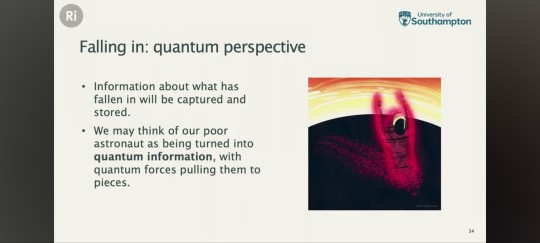
And I was immediately like:
"Oh snap! The Pokéball is a quantum computer system which functions by manipulating a miniature black hole to convert all of a target creature's matter and energy into the form of pure information!"
Conclusions:
🔮creatures inside Pokéballs are effectively in stasis, in a stasis bubble. They don't experience time, can't perceive the outside world - can't perceive full-stop, for that matter; their consciousness no longer even exists except as a snapshot of pure information.
🔮 you can store literally anything inside a Pokéball. Human beings, a pallet of dry goods, your bicycle, your car, etc, etc. Whatever you want within reason; anything that the Pokéball's AI would recognise and categorise as "a discreet thing", as long as its physical size isn't infinitesimally small, it isn't so big that it violates the safety margins built in by the system's engineers (and so probably not human beings then, after all), it isn't too amorphous to be quantised as a discreet being (i.e. Gastly in the wild are gaseous beings, and so expand to fill the room they're haunting; but Gastly in a Pokéball is just the capture of a sphere of space of some arbitrary diameter centred on Gastly's centre of mass, and so some of it will usually be left behind), and doesn't contain another Pokéball;
🔮 basically every Pokéball is a single-use Bag Of Holding. And just like those, if you put one singularity inside of another they explode so just don't do that. The PokéGovernment will send a PokéSWAT team to your Pokéhouse if they catch you even thinking about attempting to Pokéhack hack that particular safety lockout mechanism. 😡
🔮 The 'three shakes' before a pokémon is 'captured' aren't the pokémon exerting its willpower to break free of the mechanism like an angry cow kicking down a rickety corral. They're the Pokéball system running its checksums before it can declare a capture as valid and the Pokéball safe to handle:
[steps zero - if these fail the system doesn't even begin the capture process: are you attempting to capture a human being, or another Pokéball (this includes any part of any creature that is currently going into, or coming out of, another Pokéball), or the energy discharge of a pokémon attack in progress?]
1: was the targeting system accurate? Did it successfully capture one creature and nothing but all of one creature? Eg: minimal foreign debris, didn't leave a severed limb behind (or take some other pokémon's severed limb into the Pokéball too), didn't capture two or more pokémon at once (unless it's one of those 'cluster pokémon' where multiple individuals are supposed to be captured together as the individual parts of a greater whole), etc
2: while recording perfect information about the creature's brain, and analysing its brainwaves to thereby read its mind and what it was thinking at the time of capture: was it broken to the pokémon trainer's will? (Using 'broken' here in the sense of "breaking in" an untrained horse or elephant, to get them used to wearing human equipment and following human commands to do human work) i.e. reading the pokémon's mind to predict what will happen when it is released from the Pokéball: will it fight for the trainer or will it immediately turn around to continue attacking the trainer right where it left off?
[it's pretty explicit in the games' text that this is how it works. [Warning: TV Tropes] See: Strength Equals Worthiness, Defeat Means Friendship, and Gang Initiation Fight]
(and so this means that the breaking-in of a pokémon by capturing it happens before being captured in the Pokéball! Not because of being captured in the Pokéball!)
3: final checksum is degree of certainty that the information was recorded without error, and that when the information is released it will perfectly recreate the creature as if being released from a stasis bubble.
🔮 if a Pokéball breaks and its miniature black hole "evaporates in an uncontrolled fashion", whatever was recorded inside of that Pokéball has now been lost forever.
🔮 So what this looks like in practice is that Pokéballs are some of the most robust little gadgets ever devised by mankind but when they do fail they really pop off. Not unlike a LiPo battery bursting into flames. So any broken Pokéballs you come across are either uncompleted & inert factory blanks, DOA duds, or are used balls that failed some safety check or another and self-destructed.
🔮 [and this is one of the reasons why capturing a human in a Pokéball is illegal in all jurisdictions, and that taboo is built into the very device itself]

#pokemon#pokémon#pokeblogging#pokeblr#pokeball#Pokéball#pokemon theory#black holes#blogging#this was sitting in my drafts for absolutely ages and i can no longer remember what else I wanted to add so here it is
6 notes
·
View notes
Text
Acroteriumposit
Go a head put on stick.



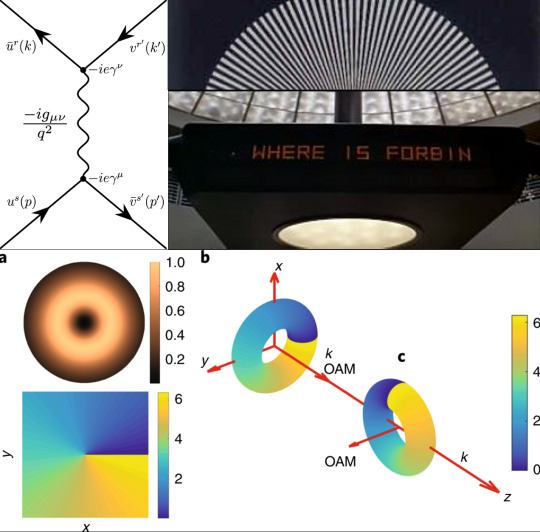

Most of you did not know that this little dog was allowed in the USSR eh?
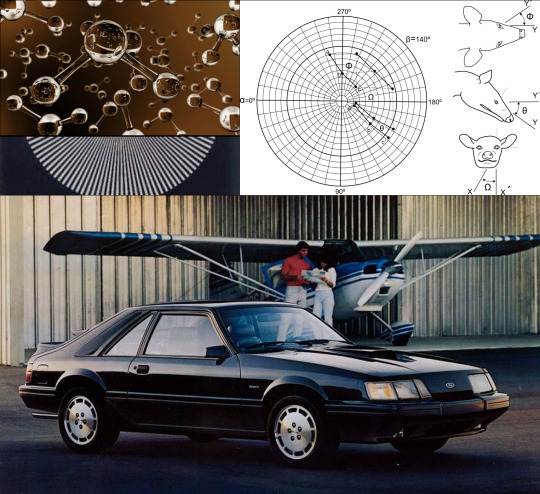
Turns out millions of rats drowned in murky bubbly water eh?
Could it be that one hundred pêr cent of the energy in a fuel could be used instead of about thirty per cent? Computers that make no waste heat? I don't make waste heat much me and I can compute ITY.
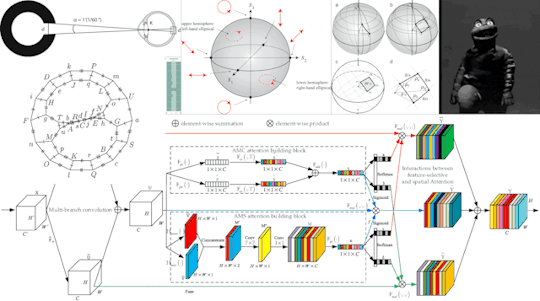
From what can be gathered it looks like the watchdog satellite is now operational.
All the illicit stuff to be revealed in full, configuration and disposition
youtube

This camouflage stuff worked somewhat. On floating balloons them square placards are reflective surfaces that can vibrate.
Why is the Don on the news daily but his trials not televised? Does the Donald take blond hormones? Do you feel the Minilla Madness?
Everyone has some kind of fatberg inside.

When you act to deliberate, be sorry for it ahead. Hard to be more lame than to be just sorry when caught. Intelligence, whatever, it has to assert only one thing: Its place. What one is trying to avoid is not hate towards, it's rancor. Some of the guys that hated me the most became my best buddies at work.
Not trying to hurt, trying to disillusionize.



The tierce does not want to count the damage they do. They bring no real value to any equation.
There need to be a justification for a secret. Having the right to is not a justification, it's an excuse. The social media rats can parasite you and corrupt your progeny because it's not forbidden, freedom.
The All knows needs to understand why 'they' cannot get along in the first place. Be Realistic, Radio Shack.



Le virilbrequin.
https://onlinelibrary.wiley.com/doi/full/10.1002/adma.201905966

'Ouahaha... Might like it.'
youtube
I can't process through beans like I used to. It does contains a lot of energy, pork n beans.
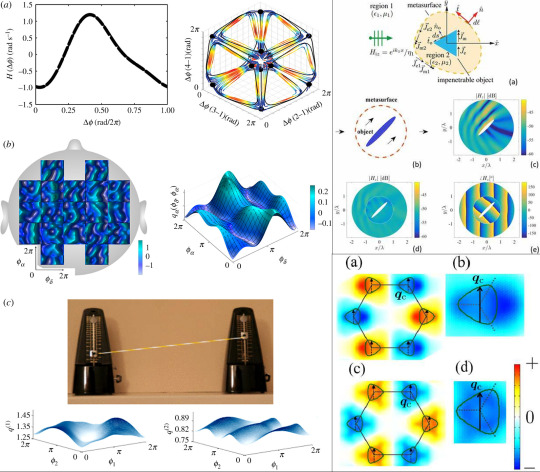
Why nurture parasites as if not? Because parasites they have right over? Because, prout?
Parasites they splatter on your viewscreen as you go, chumps. Try to get rid of this fucking laced American oranged rat. Stuck there this parasite, tabarnaks; one needs a buffer.
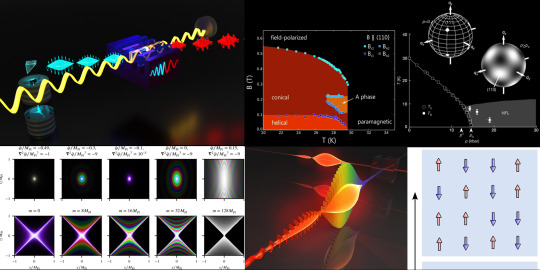
Someone was dumb enough in the past to have really went for this scrambling your minds crap. Either or, it can be cleared in full or it's parasite.




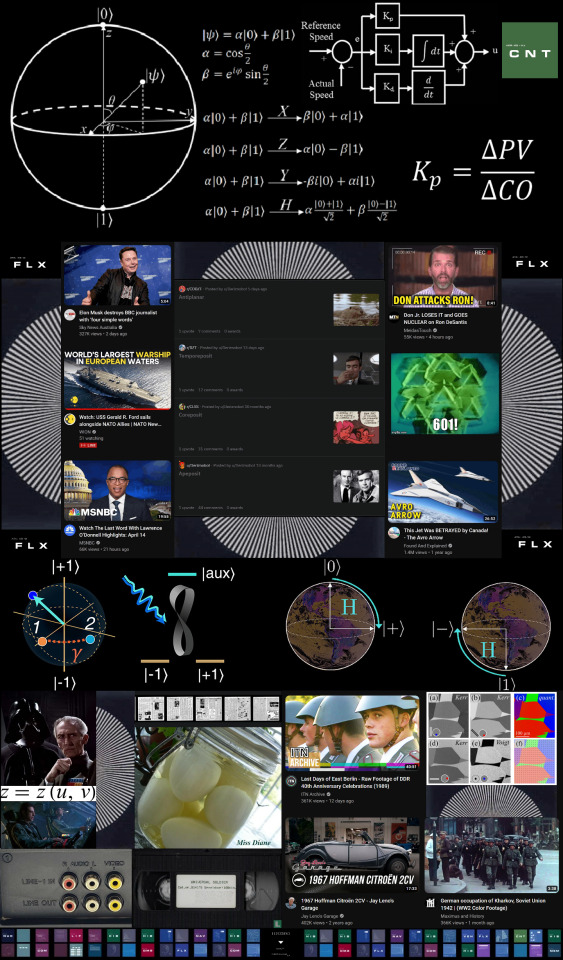

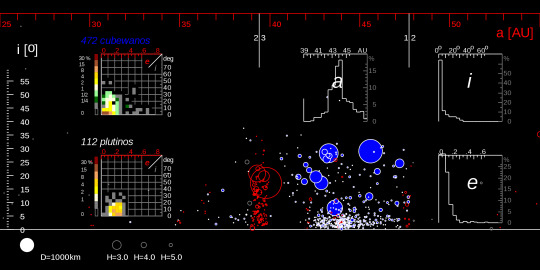
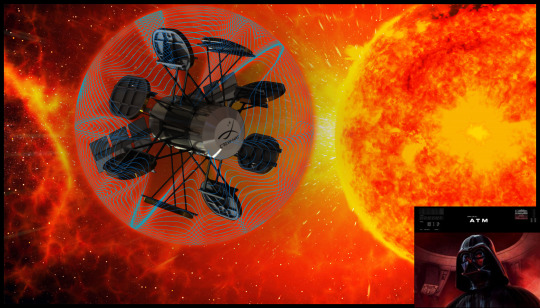
'... Hello Vile Souls...'
youtube


7 notes
·
View notes
Text
Humans are not perfectly vigilant
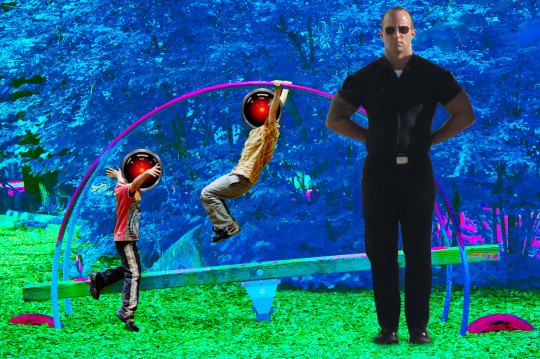
I'm on tour with my new, nationally bestselling novel The Bezzle! Catch me in BOSTON with Randall "XKCD" Munroe (Apr 11), then PROVIDENCE (Apr 12), and beyond!

Here's a fun AI story: a security researcher noticed that large companies' AI-authored source-code repeatedly referenced a nonexistent library (an AI "hallucination"), so he created a (defanged) malicious library with that name and uploaded it, and thousands of developers automatically downloaded and incorporated it as they compiled the code:
https://www.theregister.com/2024/03/28/ai_bots_hallucinate_software_packages/
These "hallucinations" are a stubbornly persistent feature of large language models, because these models only give the illusion of understanding; in reality, they are just sophisticated forms of autocomplete, drawing on huge databases to make shrewd (but reliably fallible) guesses about which word comes next:
https://dl.acm.org/doi/10.1145/3442188.3445922
Guessing the next word without understanding the meaning of the resulting sentence makes unsupervised LLMs unsuitable for high-stakes tasks. The whole AI bubble is based on convincing investors that one or more of the following is true:
There are low-stakes, high-value tasks that will recoup the massive costs of AI training and operation;
There are high-stakes, high-value tasks that can be made cheaper by adding an AI to a human operator;
Adding more training data to an AI will make it stop hallucinating, so that it can take over high-stakes, high-value tasks without a "human in the loop."
These are dubious propositions. There's a universe of low-stakes, low-value tasks – political disinformation, spam, fraud, academic cheating, nonconsensual porn, dialog for video-game NPCs – but none of them seem likely to generate enough revenue for AI companies to justify the billions spent on models, nor the trillions in valuation attributed to AI companies:
https://locusmag.com/2023/12/commentary-cory-doctorow-what-kind-of-bubble-is-ai/
The proposition that increasing training data will decrease hallucinations is hotly contested among AI practitioners. I confess that I don't know enough about AI to evaluate opposing sides' claims, but even if you stipulate that adding lots of human-generated training data will make the software a better guesser, there's a serious problem. All those low-value, low-stakes applications are flooding the internet with botshit. After all, the one thing AI is unarguably very good at is producing bullshit at scale. As the web becomes an anaerobic lagoon for botshit, the quantum of human-generated "content" in any internet core sample is dwindling to homeopathic levels:
https://pluralistic.net/2024/03/14/inhuman-centipede/#enshittibottification
This means that adding another order of magnitude more training data to AI won't just add massive computational expense – the data will be many orders of magnitude more expensive to acquire, even without factoring in the additional liability arising from new legal theories about scraping:
https://pluralistic.net/2023/09/17/how-to-think-about-scraping/
That leaves us with "humans in the loop" – the idea that an AI's business model is selling software to businesses that will pair it with human operators who will closely scrutinize the code's guesses. There's a version of this that sounds plausible – the one in which the human operator is in charge, and the AI acts as an eternally vigilant "sanity check" on the human's activities.
For example, my car has a system that notices when I activate my blinker while there's another car in my blind-spot. I'm pretty consistent about checking my blind spot, but I'm also a fallible human and there've been a couple times where the alert saved me from making a potentially dangerous maneuver. As disciplined as I am, I'm also sometimes forgetful about turning off lights, or waking up in time for work, or remembering someone's phone number (or birthday). I like having an automated system that does the robotically perfect trick of never forgetting something important.
There's a name for this in automation circles: a "centaur." I'm the human head, and I've fused with a powerful robot body that supports me, doing things that humans are innately bad at.
That's the good kind of automation, and we all benefit from it. But it only takes a small twist to turn this good automation into a nightmare. I'm speaking here of the reverse-centaur: automation in which the computer is in charge, bossing a human around so it can get its job done. Think of Amazon warehouse workers, who wear haptic bracelets and are continuously observed by AI cameras as autonomous shelves shuttle in front of them and demand that they pick and pack items at a pace that destroys their bodies and drives them mad:
https://pluralistic.net/2022/04/17/revenge-of-the-chickenized-reverse-centaurs/
Automation centaurs are great: they relieve humans of drudgework and let them focus on the creative and satisfying parts of their jobs. That's how AI-assisted coding is pitched: rather than looking up tricky syntax and other tedious programming tasks, an AI "co-pilot" is billed as freeing up its human "pilot" to focus on the creative puzzle-solving that makes coding so satisfying.
But an hallucinating AI is a terrible co-pilot. It's just good enough to get the job done much of the time, but it also sneakily inserts booby-traps that are statistically guaranteed to look as plausible as the good code (that's what a next-word-guessing program does: guesses the statistically most likely word).
This turns AI-"assisted" coders into reverse centaurs. The AI can churn out code at superhuman speed, and you, the human in the loop, must maintain perfect vigilance and attention as you review that code, spotting the cleverly disguised hooks for malicious code that the AI can't be prevented from inserting into its code. As "Lena" writes, "code review [is] difficult relative to writing new code":
https://twitter.com/qntm/status/1773779967521780169
Why is that? "Passively reading someone else's code just doesn't engage my brain in the same way. It's harder to do properly":
https://twitter.com/qntm/status/1773780355708764665
There's a name for this phenomenon: "automation blindness." Humans are just not equipped for eternal vigilance. We get good at spotting patterns that occur frequently – so good that we miss the anomalies. That's why TSA agents are so good at spotting harmless shampoo bottles on X-rays, even as they miss nearly every gun and bomb that a red team smuggles through their checkpoints:
https://pluralistic.net/2023/08/23/automation-blindness/#humans-in-the-loop
"Lena"'s thread points out that this is as true for AI-assisted driving as it is for AI-assisted coding: "self-driving cars replace the experience of driving with the experience of being a driving instructor":
https://twitter.com/qntm/status/1773841546753831283
In other words, they turn you into a reverse-centaur. Whereas my blind-spot double-checking robot allows me to make maneuvers at human speed and points out the things I've missed, a "supervised" self-driving car makes maneuvers at a computer's frantic pace, and demands that its human supervisor tirelessly and perfectly assesses each of those maneuvers. No wonder Cruise's murderous "self-driving" taxis replaced each low-waged driver with 1.5 high-waged technical robot supervisors:
https://pluralistic.net/2024/01/11/robots-stole-my-jerb/#computer-says-no
AI radiology programs are said to be able to spot cancerous masses that human radiologists miss. A centaur-based AI-assisted radiology program would keep the same number of radiologists in the field, but they would get less done: every time they assessed an X-ray, the AI would give them a second opinion. If the human and the AI disagreed, the human would go back and re-assess the X-ray. We'd get better radiology, at a higher price (the price of the AI software, plus the additional hours the radiologist would work).
But back to making the AI bubble pay off: for AI to pay off, the human in the loop has to reduce the costs of the business buying an AI. No one who invests in an AI company believes that their returns will come from business customers to agree to increase their costs. The AI can't do your job, but the AI salesman can convince your boss to fire you and replace you with an AI anyway – that pitch is the most successful form of AI disinformation in the world.
An AI that "hallucinates" bad advice to fliers can't replace human customer service reps, but airlines are firing reps and replacing them with chatbots:
https://www.bbc.com/travel/article/20240222-air-canada-chatbot-misinformation-what-travellers-should-know
An AI that "hallucinates" bad legal advice to New Yorkers can't replace city services, but Mayor Adams still tells New Yorkers to get their legal advice from his chatbots:
https://arstechnica.com/ai/2024/03/nycs-government-chatbot-is-lying-about-city-laws-and-regulations/
The only reason bosses want to buy robots is to fire humans and lower their costs. That's why "AI art" is such a pisser. There are plenty of harmless ways to automate art production with software – everything from a "healing brush" in Photoshop to deepfake tools that let a video-editor alter the eye-lines of all the extras in a scene to shift the focus. A graphic novelist who models a room in The Sims and then moves the camera around to get traceable geometry for different angles is a centaur – they are genuinely offloading some finicky drudgework onto a robot that is perfectly attentive and vigilant.
But the pitch from "AI art" companies is "fire your graphic artists and replace them with botshit." They're pitching a world where the robots get to do all the creative stuff (badly) and humans have to work at robotic pace, with robotic vigilance, in order to catch the mistakes that the robots make at superhuman speed.
Reverse centaurism is brutal. That's not news: Charlie Chaplin documented the problems of reverse centaurs nearly 100 years ago:
https://en.wikipedia.org/wiki/Modern_Times_(film)
As ever, the problem with a gadget isn't what it does: it's who it does it for and who it does it to. There are plenty of benefits from being a centaur – lots of ways that automation can help workers. But the only path to AI profitability lies in reverse centaurs, automation that turns the human in the loop into the crumple-zone for a robot:
https://estsjournal.org/index.php/ests/article/view/260

If you'd like an essay-formatted version of this post to read or share, here's a link to it on pluralistic.net, my surveillance-free, ad-free, tracker-free blog:
https://pluralistic.net/2024/04/01/human-in-the-loop/#monkey-in-the-middle

Image: Cryteria (modified) https://commons.wikimedia.org/wiki/File:HAL9000.svg
CC BY 3.0 https://creativecommons.org/licenses/by/3.0/deed.en
--
Jorge Royan (modified) https://commons.wikimedia.org/wiki/File:Munich_-_Two_boys_playing_in_a_park_-_7328.jpg
CC BY-SA 3.0 https://creativecommons.org/licenses/by-sa/3.0/deed.en
--
Noah Wulf (modified) https://commons.m.wikimedia.org/wiki/File:Thunderbirds_at_Attention_Next_to_Thunderbird_1_-_Aviation_Nation_2019.jpg
CC BY-SA 4.0 https://creativecommons.org/licenses/by-sa/4.0/deed.en
#pluralistic#ai#supervised ai#humans in the loop#coding assistance#ai art#fully automated luxury communism#labor
379 notes
·
View notes
Text
Awkward First Dates

Awkward First Dates: How Humanity Keeps Fumbling the Opening Act of Romance
The glorious mess of love’s opening scene—now SEO-optimized for your emotional catastrophe Welcome to SpinTaxi.com, where awkward first dates aren't just embarrassing—they’re a sacred rite of passage for humanity, ranking just below “accidentally replying-all” and slightly above “calling your teacher ‘mom’ in fourth grade.” Today, we plunge into the uncomfortable, tragicomic swamp that is awkward first dates, that universal experience where flirting meets failure and everyone leaves slightly more self-aware and significantly more dehydrated. Let’s dim the lights, cue the emotional baggage, and begin the slow-motion trainwreck. The Ancient Origins of Awkward First Dates Anthropologists believe the awkward first date may predate fire. Cave paintings in southern France depict two early humans sitting silently across from each other, with a speech bubble reading “So… what do you do?” next to a thought bubble reading “Kill me.” By 500 BCE, the Greeks formalized first-date awkwardness. Plato writes in The Symposium of a man who brings olives and discourse, only to find his date is already emotionally committed to her horse. A Babylonian cuneiform tablet reads: “She brought goat stew. I brought a harp. We both cried. Then she ghosted me.” Humanity has always stumbled through romance with the grace of a goat in stilettos. Dating Apps: Where Awkwardness Goes to Scale Modern awkward first dates now begin online. Algorithms pair people using mysterious calculations that seem to prioritize dental alignment and shared trauma over compatibility. After 47 hours of witty banter and emoji exchanges, a date is set. The awkwardness starts the moment you realize your “6'1'' outdoorsy intellectual” is a 5'6'' man who once read The Da Vinci Code in a Bass Pro Shops parking lot. And you? You're a “sarcastic bookworm who likes sushi,” which he reads as “emotionally unavailable pescatarian with judgmental eyebrows.” Welcome to the romantic gulag of awkward first dates. The Restaurant Ritual: A Temple of Mutual Discomfort The dinner date is the colosseum of romantic misfires. You are seated at a table with poor lighting, poor acoustics, and poorer decisions. There’s always that moment when the waiter says, “Can I start you off with some drinks?” and you both freeze like it’s a hostage negotiation. You order a martini to calm your nerves. They order milk. You question your life. They ask if you’ve “ever been in love with a reptile.” There is no recovery. And the menus? Nothing says sexual tension like mispronouncing “gnocchi” while locking eyes across a sea of regret and marinara. Fashion Disasters: Wardrobe Meets War Crime Awkward first dates demand a wardrobe crisis. He wears cologne that smells like gasoline and desperation. She wears heels she can’t walk in and a blazer she can’t move in. Someone inevitably sweats through their silk shirt trying to open a door that says “PUSH.” An informal survey conducted by the American Academy of Dating Sociology (AADS) found that 67% of awkward first dates end prematurely due to "outfit incompatibility." Socks with sandals. Turtlenecks in July. Crocs described as "ironic." It’s a crime scene from the Fashion CSI files. Small Talk, Big Regrets The first 30 minutes of a first date are dedicated to Advanced Small Talk. The goal: not to scream or confess your credit score. "So, what do you do?""I'm in tech.""Cool. Like, what kind?""I moderate Reddit fights about quantum computing.""...Romantic." Small talk is a carefully curated trauma dump. You want to sound interesting, but not like someone who live-tweeted their colonoscopy. And yet, somehow, it always ends with one of you oversharing about your uncle who faked his own death at a Chili’s in Tampa. The Political Landmine Moment At some point, someone says something about taxes, healthcare, or Elon Musk, and boom: you're no longer on a date—you're on Crossfire. She mentions voting. He mentions freedom. She brings up climate change. He mentions how cows are the real threat. She slowly reaches for the emergency pepper spray. A Pew Research poll showed that 89% of Americans have left a date early due to the phrase, “I’m not political, but…” It’s the social equivalent of saying, “I’m not contagious, but my rash is shaped like Florida.” Food Ordering Disasters: A Culinary Comedy Ordering food on a first date is a bizarre performance of economic humility and gustatory theatre. “I’ll just get a salad,” says one, pretending not to be ravenous.“Same,” says the other, whose stomach is audibly growling.Then the waiter says, “We’re out of lettuce,” and panic sets in. One orders spaghetti. The other orders ribs. Sauce flies. Shirts are ruined. Someone tries to flirt with a breadstick. One woman told SpinTaxi.com: “He ordered a single grape as an appetizer. Said he was ‘intermittent fasting spiritually.’ I ordered nachos. He asked if that was a red flag.” Yes. Yes, it was. Bathroom Escapes and Window Checks There is always a moment on an awkward first date when one party goes to the bathroom and contemplates using the restroom window to escape. In upscale restaurants, the window is too small. In dive bars, there is no window—just a motivational sign that says, “You’re Worthy of Love!” In a SpinTaxi.com reader poll, 34% admitted to thinking about climbing out the bathroom window on a bad date. Another 12% tried. One succeeded, leading to a short-lived but wildly successful podcast titled Swipe, Dip, and Dash. The Overconfident Kiss Attempt At the end of the night, when all signs say “Do not,” one brave fool attempts a kiss. It’s often framed like a romantic climax but feels more like a dental appointment held in a haunted parking lot. You lean in. They lean away. You pretend you weren’t leaning. They pretend they don’t notice your forehead hitting their ear. As romantic consultant Sheena Rawlins told SpinTaxi.com: “The end-of-date kiss should be illegal without a unanimous jury decision. Otherwise, you’re just playing sexual Jenga with no blocks left.” Payment Politics: Who Pays, Who Prays Ah, the check arrives. Both parties immediately become actors in an unpaid improv skit called Financial Modesty. One reaches. The other slaps their hand. Both pretend they want to pay. Neither actually wants to pay. Eventually, someone says, “Wanna split it?” and the romance dies like a goldfish in warm tap water. Venmo has made this worse. Now you can argue about the exact tax and tip for a shared calamari while a digital receipt judges you in Helvetica. Friends’ Reactions: Judgment and Mockery After the date, you debrief with friends. They ask important questions like “Did you have fun?” and “Did you check for felony convictions?” You say, “It wasn’t that bad,” which is first-date code for “I wish I’d been hit by a Segway.” Your friends immediately do an FBI-level background check on the person and discover their third cousin once tweeted “Nickelback is underrated.” You are never allowed to speak to them again. The Follow-Up Text Fiasco Nothing is more delicate than the follow-up text. Too soon? Desperate. Too late? Ghosted. Too witty? Try-hard. Too basic? Middle school energy. You send: “Hey! Had fun last night. :)”They reply: “New phone who dis?”You delete all apps, retreat into a burrito of shame, and whisper: “At least I got free chips.” What the Funny People Are Saying “First dates are like job interviews with wine and lies.”—Jerry Seinfeld “I once had a date where she brought her emotional support turtle. Halfway through, I realized she meant me.”—Ron White “You know it’s going bad when your appetizer is more engaging than your date.”—Amy Schumer “I wore cologne called ‘Desperado.’ That should’ve been a red flag. For both of us.”—Larry David Why We Keep Doing It Anyway Despite the horror, humans continue to pursue awkward first dates like moths chasing bug zappers. Why? Because we’re romantics. We believe the next date might be the one, or at least less terrible than the last. Sociologists say awkward first dates are a modern form of hazing—if you can survive 45 minutes of someone quoting Jordan Peterson over crème brûlée, you're strong enough for love. And sometimes… sometimes, the awkwardness is mutual, adorable, and just human enough to be charming. One woman wrote to SpinTaxi.com: “We both spilled soup. We both cried laughing. We both pretended to like ska. We’re getting married in November.” Sources: How Many Times Can One Woman Say “LOL” Before a Date Ends It AllA linguistics professor from UC Berkeley tracked a woman who said "LOL" aloud 37 times during a 45-minute dinner. Her date reportedly called an Uber under the table after the 22nd “LOL.” The woman later defended herself saying, “It’s how I cope with silence... and men who say ‘crypto.’” Breadstick Confessions: First Date Body Language Experts Speak OutPsychologists agree: if your date hugs the breadbasket like it’s a flotation device, they’re either emotionally unavailable or just really into carbs. One woman was seen slow-dipping her breadstick in ranch while maintaining zero eye contact, prompting experts to call it “carbohydrate-based self-soothing.” Awkward Date Leads to Accidental Engagement, Woman Too Polite to DeclineA man proposed on the first date as a “joke,” but the woman, unable to process conflict while chewing calamari, nodded. They’re now legally engaged in two states. When asked why she didn’t say no, she replied, “I was raised Catholic and he already paid for dessert.” Man Says "Namaste" Instead of "Hello" and Never RecoversA yoga instructor mistakenly greeted his date with “Namaste” and a full bow, knocking over a scented candle and shattering the restaurant’s ambience. His date, a jiu-jitsu instructor, replied with, “Bless your chakras,” and ordered two bourbons to drown the energy. Love at First Sip... of Someone Else’s DrinkA woman accidentally sipped from her date’s mojito, sparking a brief but passionate five-minute romance before realizing she was seated at the wrong table. The actual date arrived late and was disappointed to learn she had emotionally bonded with a stranger’s straw. Bathroom Window Too Small for Dignified Escape, Says Local WomanA woman attempted to flee her Tinder date during his 20-minute monologue on NFTs, only to discover the gastropub’s bathroom window was decorative. She returned to the table bruised and defeated. The man reportedly said, “No worries, I talk to myself all the time.” Date Night Disaster: Man Brings Resume Instead of FlowersAttempting to impress a corporate consultant, a man arrived with a printed résumé instead of flowers. He referred to himself as a “Team Player with Passion for Synergy.” She left mid-salad. He later updated his CV to include “Experience with heartbreak.” Barista Forced to Mediate Awkward Coffee DateA barista in Austin stepped in to referee a date when both parties refused to define "vibe." One ordered a hot chai “as hot as this situation,” the other asked for an “iced existential crisis.” The barista awarded neither a second date and charged extra for emotional labor. Woman Pretends to Enjoy Tapas, Forgets She's Allergic to OlivesIn an attempt to seem adventurous, a woman agreed to tapas despite a mild olive allergy. Three bites in, she began to swell “like a romantic balloon,” according to the waiter. Her date googled antihistamines while muttering, “This is going better than last week.” Local Man Misreads Vibe, Proposes Marriage Over Mozzarella SticksA man interpreted a shared mozzarella stick as “divine cosmic alignment” and proposed with a plastic ring from the restaurant’s kid’s menu. She said yes out of pity, then asked if he had a therapist. He said, “I am a therapist.” She ran. Final Thoughts Awkward first dates aren’t glitches in the dating system—they are the system. They’re the mess before the meaning, the blooper reel before the box set. And while we may cringe, cry, and occasionally crawl out of a bathroom window, we also learn. Usually not much. But sometimes… enough to try again. Auf Wiedersehen, lovers. And remember: if your date says, “I brought my mom,” don’t panic. Just ask if she’s paying.

SpinTaxi Magazine - Wide-aspect cartoon in the exaggerated, chaotic hand-drawn style of Toni Bohiney, like SpinTaxi Magazine. Scene A disastrous first date at a fancy restaurant... - spintaxi.com Read the full article
#awkwardfirstdates#awkwardromance#baddates#cringedatingstories#datenightcomedy#datinghumor#datingsatire#first-datedisasters#moderndatingfails#romanticmishaps
0 notes
Text
What Makes Acids and Bases React 2025

What Makes Acids and Bases React 2025
Book-Based Explanation (University Level) Acids and bases react due to the fundamental chemical interactions involving protons (H⁺ ions) and hydroxide ions (OH⁻ ions). This is best understood through several key theories that explain their behavior: 1. Arrhenius Theory - Acid: A substance that increases the concentration of H⁺ ions in aqueous solution. - Base: A substance that increases the concentration of OH⁻ ions in aqueous solution. - Reaction: When an acid and base are mixed, H⁺ from the acid reacts with OH⁻ from the base to form water (H₂O). This is called a neutralization reaction. Example: HCl (aq) + NaOH (aq) → NaCl (aq) + H₂O (l) 2. Brønsted-Lowry Theory - Acid: Proton donor. - Base: Proton acceptor. - This theory expands on acid-base behavior even in non-aqueous solutions. Example: NH₃ + H₂O → NH₄⁺ + OH⁻ Here, water donates a proton (acting as an acid) and ammonia accepts it (acting as a base). 3. Lewis Theory - Acid: Electron pair acceptor. - Base: Electron pair donor. - This theory is more generalized and includes a wider range of chemical reactions. Example: BF₃ (acid) + NH₃ (base) → F₃B←NH₃ In this interaction, ammonia donates an electron pair to boron trifluoride, forming a coordinate covalent bond. Why Do They React? - The driving force of an acid-base reaction is the movement of protons and/or electrons to achieve a more stable, lower-energy state. - These reactions are often exothermic, releasing energy. - The products are typically more stable than the reactants (e.g., water and a salt in neutralization reactions).




Easy Explanation (With Examples) Let’s make this super simple! Think of acids as being a little like "proton throwers" – they have extra protons (H⁺ ions) and want to get rid of them. Bases are like "proton catchers" – they want to grab those protons. Simple Analogy: Imagine acids as people giving away basketballs (protons), and bases are players trying to catch those balls. When a basketball (proton) is passed from the acid to the base, they both feel good – this is the chemical reaction happening! Everyday Example: - Vinegar (acid) reacts with baking soda (base). - It bubbles and fizzes because a chemical reaction happens that makes carbon dioxide gas. Equation (simplified): Acid + Base → Salt + Water Another Simple One: - Lemon juice (acid) and soap (base) can neutralize each other. - The sour and slippery cancel out, making the mixture neutral. So, acids and bases react because one wants to give something (a proton), and the other wants to take it. Together, they form something more balanced. Disclaimer: The easy explanation is designed to help you understand the basic concept using simple words and analogies. However, if you're writing an answer for an exam or assignment, please stick to the book-based explanation above. We’re just trying to make the learning process fun and clear. Scoring less by using simplified answers in exams is not our responsibility. External Resource: For a deeper understanding, you can read the Wikipedia page: Acid–Base Reaction https://en.wikipedia.org/wiki/Acidbase_reaction Related Articles from EdgyThoughts.com: - What If Quantum Computers Could Simulate an Entire Human Brain? https://edgythoughts.com/what-if-quantum-computers-could-simulate-an-entire-human-brain - How Do Enzymes Control Metabolism 2025 https://edgythoughts.com/how-do-enzymes-control-metabolism-2025 Read the full article
#20250101t0000000000000#2025httpsedgythoughtscomhowdoenzymescontrolmetabolism2025#acidbasereaction#ammonia#analogy#aqueoussolution#basechemistry#basketball#behavior#borontrifluoride#brnstedlowryacidbasetheory#carbon#carbondioxide#catcher#chemicalbond#chemicalreaction#chemicalsubstance#chemistry#concentration#concept#coordinatecovalentbond#covalentbond#edgythoughtscom#electron#electronacceptor#electronpair#energy#enzyme#exothermicprocess#explanation
0 notes
Video
youtube
Discover the Wonders of Allah: Numbers & Quantum Mysteries! 🌌✨Join us on an enchanting journey through the incredible wonders created by Allah, where numbers and quantum phenomena reveal the divine design of our universe. Explore how numbers, the building blocks of creation, and quantum mechanics, the realm of the very small, intertwine to showcase the interconnectedness of all things. Learn about qubits and their superposition, the magic of entanglement, and the awe-inspiring potential of quantum computers. Dive into this cosmic adventure, uncovering the rhythm and stories hidden in numbers, and marvel at Allah's ultimate intelligence and wisdom. Like and share if you enjoyed the video! 🌐 #QuantumMysteries #DivineDesign #NumbersInCreation #QuranAndScience #QuantumComputing 💫OUTLINE: 00:00:00 Allah's Wacky Wonders! 00:01:07 Quantum Craziness Takes Off! 00:02:36 Building Blocks of the Universe! 00:04:12 Where Things Get REALLY Weird! 00:08:01 Numbers, Quantum, and YOU! 00:08:52 Tomorrow's Bonkers Bonanza 00:10:16 Kids Like You Changing the World! 00:11:36 Numbers That Boogie-Woogie 00:12:57 Qubits That Twirl and Tickle 00:14:22 Star-Pals Go Zoom-Zap 00:15:40 Allah’s Mega-Brain Bonanza 00:17:01 Quantum Munchie Madness! 00:18:16 Earth’s Bubble-Blast Cleanup 00:19:31 Goofy Potion Power! 00:20:40 Numbers Spill Silly Tales 00:21:59 Quantum Time-Ticklers 00:23:12 Quantum Party Poppers 00:24:22 Allah’s Puzzle-Palooza 00:25:36 Go Bonkers Forever! 00:26:52 Why Numbers and Quantum Are Super-Duper Special 00:28:39 The Bonko Cosmic Carnival 00:30:10 The Quantum Critter Zoo 00:31:36 From Little Numbers to Limitless Possibilities! 00:32:03 The Adventure Never Ends! 00:32:25 A Universe of Thanks to Allah! 00:32:47 The End. .. Or Is It Just the Beginning?Why Numbers and Quantum Are Super-Duper Special! | Allah’s Amazing World
0 notes